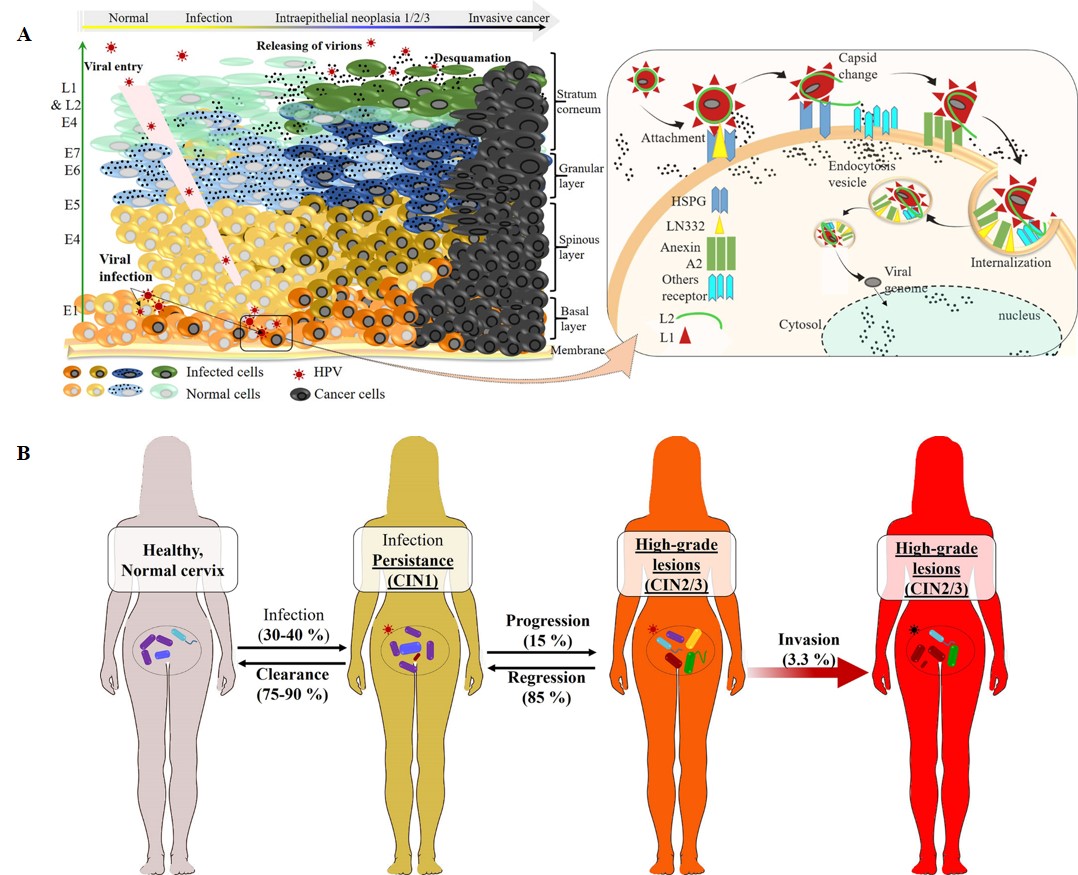Epidemiology and Burden of Human Papillomavirus and Related Diseases, Molecular Pathogenesis, and Vaccine Evaluation.
KOMBE KOMBE A,J,. et al.’s new published article entitled “Epidemiology and Burden of Human Papillomavirus and Related Diseases, Molecular Pathogenesis, and Vaccine Evaluation”, was accepted on December 86th, 2020 in Frontiers in Public Health, and became available online since January 20th 2021 (https://www.frontiersin.org/articles/10.3389/fpubh.2020.552028/full).
Professors Jin Tengchuan and Ying Zhou are the corresponding authors.
Keywords: HPV-related disease; cervicovaginal microbiome; epidemiology; human papillomavirus (HPV); intratypic molecular variant; molecular pathogenesis; natural history.
Diagnosed in more than 90% of cervical cancers, the fourth deadliest cancer in women, human papillomavirus (HPV) is currently the most common pathogen responsible for female cancers. Moreover, HPV infection is associated with many other diseases, including cutaneous and anogenital warts, and genital and upper aerodigestive tract cancers. The incidence and prevalence of these pathologies vary considerably depending on factors including HPV genotype, regional conditions, the study population, and the anatomical site sampled. Recently, features of the cervicovaginal microbiota are found to be associated with the incidence of HPV-related diseases, presenting a novel approach to identify high-risk women through both blood and cervical samples. Overall, the HPV repartition data show that HPV infection and related diseases are more prevalent in developing countries. Moreover, the available (2-, 4-, and 9-valent) vaccines based on virus-like particles, despite their proven effectiveness and safety, present some limitations in terms of system development cost, transport cold chain, and oncogenic HPV variants. In addition, vaccination programs face some challenges, leading to a considerable burden of HPV infection and related diseases. Therefore, even though the new (9-valent) vaccine seems promising, next-generation vaccines as well as awareness programs associated with HPV vaccination and budget reinforcements for immunization are needed.

A) Representation of HPV infection cycle at the molecular level and progression to invasive cancer and, virus–receptor interactions from the attachment to the internalization on the epithelial cells during one infection cell cycle. B) Cervicovaginal microbiome (CVM) features in HR-HPV infection natural history. The main characteristic of the CVM is its microbial diversity (Lactobacillus spp.—in purple, Vibrio and flagelled bacteria—in blue and green). Once an HR-HPV infection (red star) occurs in the 30–40% of exposed women (90%), few of them develop HPV-associated abnormalities such as low-grade cervical intraepithelial neoplasia (CIN1) or lesions, which can progress to high-grade lesion (CIN2-3) responsible in long term to invasive cervical cancers. In this figure, and as previously found, the abundance of Lactobacilus spp. is associated with a regression of viral persistence and a clearance of the infection. However, the progression of the infection to the precancerous lesions is associated with a subsequent increase in the microbiota variability, specifically Gardnerella vaginalis (in red) bacteria and some pathogenic fungi. The CVM may then serve to identify HPV-infected women with pre-cancer risk. The effect of Gardnerella on the CVM stability is involved in the HPV infection natural history.

